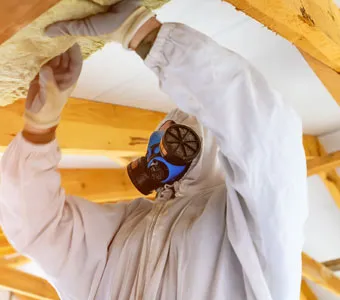Could you drown in the Third Wave?
Could you drown in the Third Wave?
Asbestos continues to pose a genuine risk to millions of Americans
Asbestos is one of those items that are often seen as being a remnant of America’s industrial past. It was believed at one time that asbestos-related illness would taper off, as workers from the WWII-era passed. The conventional wisdom is that they may not have understood the danger posed by asbestos fibers, but we have progressed beyond that. We have regulations and laws that protect us from asbestos.
Right?
Wrong. Asbestos was much in the news in the 1970s, as disclosures that the industry had long hid showed the devastating effects of asbestos, which took the form of workers dying from mesothelioma decades after they had been exposed to the deadly fibers in shipyards, industrial factories and mines.
Asbestos-it’s out there, everywhere
Many people mistakenly believe the use of asbestos is prohibited in the United States. It is not. Some uses are restricted, but the asbestos industry successfully litigated a stop to more comprehensive regulations developed by the Environmental Protection Agency.
Even today, with the restrictions that do exist, in 2014, 400 metric tons of asbestos were used in the United States. As dangerous as new asbestos is, there are the millions of tons of asbestos that have used in buildings, pipes, insulation, shingles, floor tile and a vast quantity of additional uses, that has been growing for more than 100 years.
Virtually every structure built before 1980 very likely contains significant portions of asbestos-containing materials. Some of these materials are relatively benign, as long as they are undisturbed or undamaged.
However, when floor tile becomes worn or chipped, when ceiling tile becomes water damaged, then dries and begin to flake or when plaster, drywall or cement made with asbestos begins to become friable or aerosolized, as when it is drilled or sawed, asbestos fibers can become airborne.
How much asbestos is in your home or office?
This means tens of thousands of buildings in North Carolina and throughout the nation are potential time bombs, waiting for that damage or deterioration to slowly begin the release of the microscopic fibers that float lazily on air currents in a home, school, hospital or office until they are inhaled.
They then begin their journey into the lungs or sometimes other organs, where they reside, seemingly inertly. Then, years or decades later, the individual develops a cough or has difficulty breathing. It may be dismissed it as a cold or allergy. But it hangs on. They visit a doctor, and eventually they are given the shocking diagnosis.
Mesothelioma
No, it cannot be, they may think. How? When? All very good questions and it is this very long-delayed development that in many cases shield the manufacturers and those who very often knowingly used this useful but dangerous mineral. Because an asbestos-related illness like mesothelioma can be incurred by a single exposure to asbestos and because it may take decades for the disease to manifest, many may have little idea as to where they were exposed.
First, asbestos killed those who mined and processed the mineral. Next, it came for those who used it in factories, shipyards and mechanics shops. In the third wave, it may come for anyone who lives or works in buildings that contain those materials.







